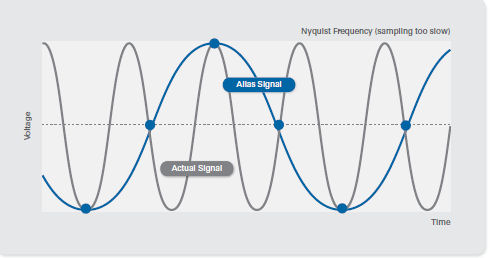May 20, 2013
Sound detection is an interesting business. Example: The other day a battery in a smoke detector started chirping, launching my bub Jess and me into the chase. “Sounds like it’s from over there. No, over here. Wait, upstairs maybe?” A chirping smoke detector is, quite obviously, the devil’s spawn. Not only is the sound intermittent, but it also ripples around the house, making it simultaneously everywhere and nowhere. And you stand motionless with your head foolishly cocked to one side trying to home in on the chirp.
 |
As serendipity would have it, I’ve been asked to review “Using Acoustic Beamforming for Pass-By Noise Source Detection,” a brand new application note from National Instruments. Now, from acoustic beamforming, I know nothing, first thinking that the new Star Trek movie had something to do with it. But, let me tell you, this 15-page application note penned by Doug Farrell, a product manager at NI, is an excellent piece of work.
Acoustic beamforming, I learned, is the kin of traditional pass-by noise tests. Traditional tests help you determine the sound level of noise sources on a vehicle during operation. These are mostly near field tests where you can snuggle your sensors up to the noise source. Here, you’re measuring emanations a wavelength or two from the source. Beamforming, on the other hand, is a far field technique. Here, you’re measuring emanations about seven wavelengths away from the source. Making it well suited for those times when you cannot get your sensors close enough to a passing vehicle.
As you no doubt surmise, acoustic beamforming testing offers a bunch of challenges. First of all, it’s done outside, meaning you have to contend with weather conditions, test track geometry, cabling, and a large sensor array. Then you have simultaneous acquisition and transmission of many signals, advanced signal conditioning, and signal processing to figure out. You have huge data sets to acquire and process quickly so that you can visualize results in real time.
You get the idea. It’s a complex affair. And Farrell unfolds the challenges and describes the how, what, and why of implementing beamforming test set-up clearly and concisely. He almost makes it sound simple. His technique is to step you through a complete system set-up. Components and their roles are explained and best practices offered (and, for a change, why they are best rather than “because I said so”). The result is an end-to-end guide that, if applied, should produce an accurate analysis of noise location and volume on vehicles.
Major topic areas include microphone arrays, wiring considerations, signal processing, analysis, and storage. The segment on signal conditioning and data acquisition for microphone arrays is, perhaps, the most noteworthy. It provides cogent discussions of triggering, sensor excitation, anti-alias filtering, data streaming rates, and data transfer bus selection that are worth the download effort regardless of your need for pass-by guidance. The paper is illustrated with 11 figures, a table, links to a couple of case studies, and a list of citations.
“Using Acoustic Beamforming for Pass-By Noise Source Detection” is well written and an education for both the curious and the old hand. It’s full of helpful recommendations for engineers performing pass-by tests to, ultimately, adjust a vehicle’s design to quiet it down to comply with environmental noise regulations or beat customer expectations. As of this writing, this application note is so brand new you’ll struggle a bit to find it on the National Instruments wesbsite, but you can download your complimentary copy by hitting the link over there. Do it even if acoustics testing is not in your purview. It’s that interesting.
Thanks, Pal. – Lockwood
Anthony J. Lockwood
Editor at Large, Desktop Engineering
Download: Using Acoustic Beamforming for Pass-By Noise Source Detection
Subscribe to our FREE magazine, FREE email newsletters or both!
About the Author
Anthony J. Lockwood is Digital Engineering’s founding editor. He is now retired. Contact him via [email protected].
Follow DE





